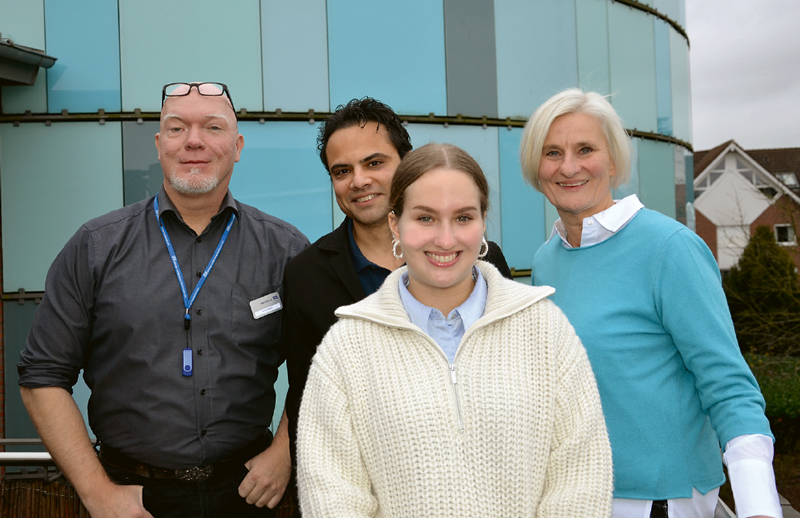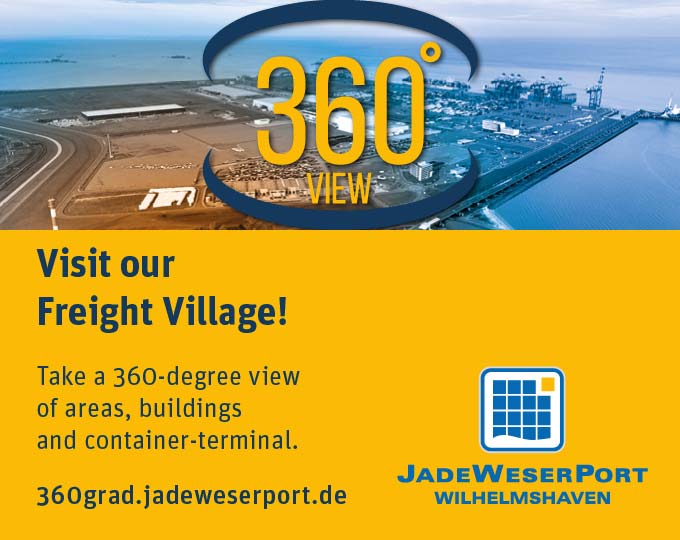The NSB Group has two new ship navigation simulators, with which the ship management company plans to train the crews of the freighters it manages itself as well as those of other shipping companies. It is based in Buxtehude in the state of Lower Saxony, close to Hamburg.
Credits: Claudia Behrend, Daniela Ponath
But the main engine cannot be throttled. “The fast manoeuvres necessary here are only possible at high speeds like these,” explains Morten Magnil, Lead Instructor at the NSB Academy. He is right, as the few seconds of conversation are enough to distract us from the ferry that suddenly appeared and plans to cross the strait, which we now have to contend with in addition to the two freighters on the sides. And wasn’t that cruise ship up ahead going much slower and heading in a different direction?
Unlike laypeople, pilots who navigate the real Strait of Messina are well aware that the nautical conditions here are complex, which is made all the more difficult by the heavy traffic. “Even in good weather with minimal waves, the current, undercurrent and tides can be quite a challenge – even for experienced officers,” says Magnil. “We always train here at a higher level of difficulty than you’re likely to encounter in real life.” There is also the fact that poor visibility and high waves can make manoeuvring more difficult.
Changes in weather at the touch of a button
The simulator can change the weather in mere seconds at the touch of a button. The sea and sky go from blue to a cloudy grey as the waves grow larger and form whitecaps, and sleet lashes against the windows, reducing visibility significantly.
“Last year, we realised we needed to update the simulator that the nautical officers had been training with at the company’s maritime training centre since 2007,” explains Magnil. “But first we needed to come up with a concept and a catalogue of requirements.” They started planning in 2022 and began retrofitting the system for the technical update in May 2023, which took around five months. The system has been fully operational since December and has been thoroughly tested since. NSB invested approximately 600,000 euros to improve the nautical officers’ situational awareness.
Besides different types of ship, the system currently features around 50 container carriers of different sizes, as the size of the carrier can impact manoeuvrability significantly. “The program needs to contain the specific underwater model and the hydrodynamic characteristics to ensure the simulation reflects reality,” explains Magnil. For example, a ship with a capacity of 1,868 boxes responds very differently from an enormous container carrier with space for up to 24,000 TEU.

Left to right: Lead Instructor Morten Magnil, Marine Instructor Ankit Archarya, Trainee Melanie Vidal Maia and Vice President People & Talent Development Caroline Baumgärtner
Facts
NSB Group
Established: 1982
Headquarters: Buxtehude near Hamburg
Locations: Singapore, The Philippines, South Korea and China
Area(s) of business: Traditional technical management, including commercial management, crew management and training, insurance services, engineering services and new construction
Vessels: Currently 49 – 46 container carriers between 1,000 and 8,500 TEU and three tankers
Employees: Around 1,100 at sea and 160 on land
Training officers and cadets
In the future, the ships managed by the company itself will be joined by those of different shipping companies, creating another field of business. When you provide the NSB Academy team with the specifications for a certain ship, you need to allow approximately two months for programming before any training can take place. The simulator is used for training officers, for briefings and instructions, and for testing for promotion to new positions such as captain. The courses are developed for NSB’s maritime personnel as well as for the officers of other companies.
For the first time, the two new simulators can now connect different training centres in a way that was never possible before. “One of the exercise scenarios developed in-house allows participants to take part at different locations and in varying roles. In other words, we offer training units in real time,” explains the instructor. For example, cadets can be trained in Buxtehude and taught by training partners in their home countries, like the Philippines.
“For us, it’s important to agree on concrete aims in advance, so we can develop a suitable learning concept,” says Caroline Baumgärtner, Manager of the Academy. “Our training courses are usually three to five days long and consist of ten different practical scenarios such as near-collision and demanding coastal routes – always with a focus on well-founded decision-making in complex situations.”
In addition to nautical skills, our courses also teach communication, in particular, both on the bridge and with different actors in the connected simulators. After all, analyses have shown that many dangerous situations on board are the result of insufficient communication and coordination, rather than technical failure or a lack of abilities.
It is not just about safety standards but also the cultural values at NSB such as teamwork as well as community and social responsibility. Training courses are video-recorded, so that they can be played back at the desired speed for discussion afterwards. The staff in Buxtehude are especially proud of the fact that the new simulators fulfil the DNV-ST-0029 standard of the DNV classification society for maritime training centres – which an audit in December successfully confirmed for another year. (cb)






